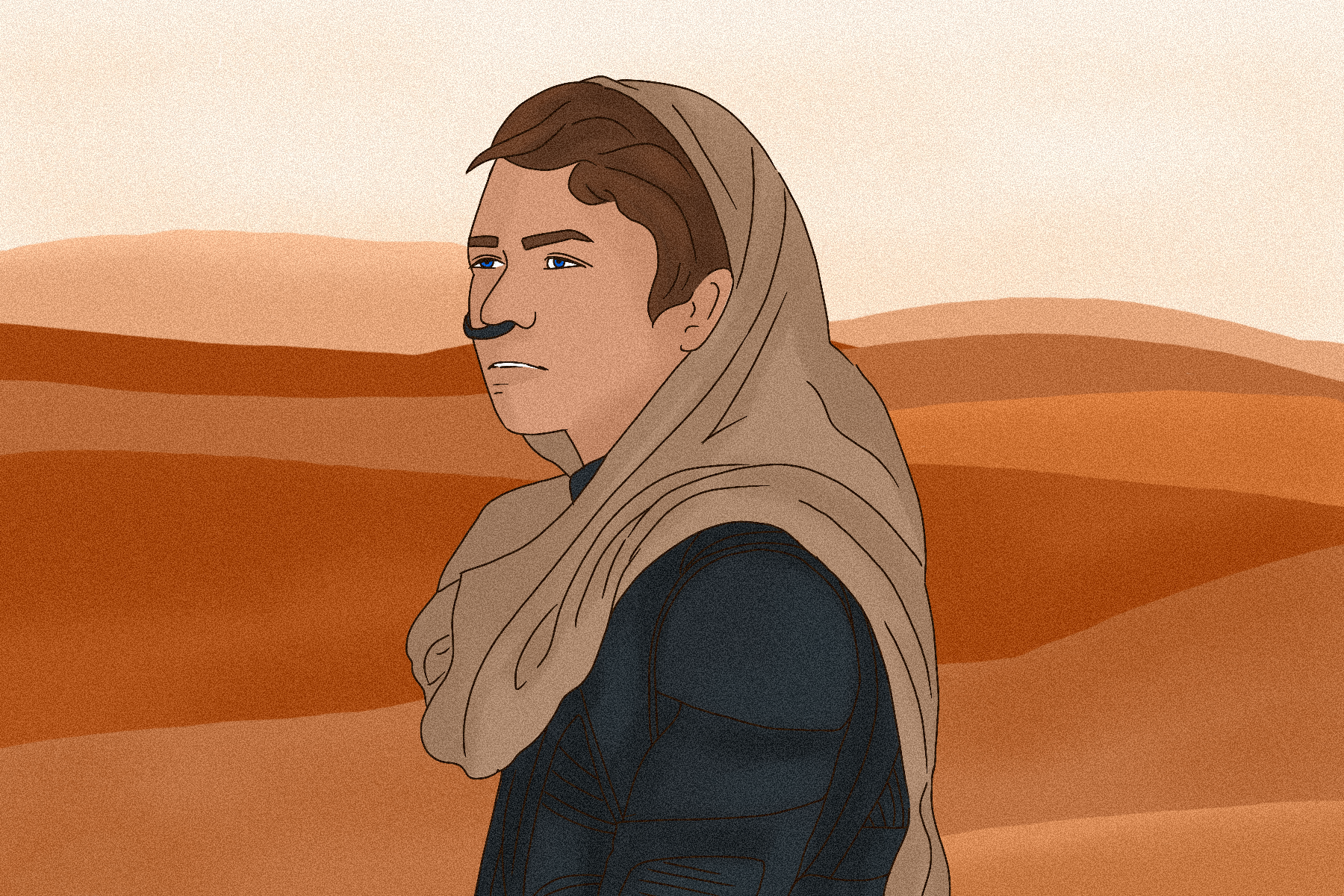How the presence of Islamic mythology and the history of the Middle East’s colonization in the story of “Dune” defines and grounds the story.
The success of major science fiction cinematic franchises such as “Star Wars,” “Avatar,” “Alien,” “Planet of the Apes” and more is a testament to the genre’s ability to appeal to a wide audience. For horror, one can turn to “Alien”, whereas wild west fans can turn to “Star Wars” and noir fans can watch (or read) “Blade Runner”. With Episode IV of “Star Wars” released in the ’70s and the first “Avatar’s” release in 2009, these decade spanning sci-fi blockbusters can trace thier irigins back to one book series that began in 1965: Frank Herbert’s “Dune”. The home planet of Luke Skywalker, Tatoooine, is directly based off Dune’s Arrakis; with its twin suns, harsh desert, nomadic natives, and a giant worm like creature that consumes everything. Dune has the sandworm. Tatooine has the sarlacc. The first novel, set in our universe in the year 10191, follows Paul Atreides as he takes on the role of a messiah for the Fremen – the indigenous people of the desert planet Arrakis – to free them from colonial rule. The novel deals with themes regarding white saviorism, religious fanaticism, colonization, heroism and ecology. Though the novel is set in the far future and part of the science fiction genre, its most prominent influences include religion, specifically Islam. Additionally, the novel also takes inspiration from the history of the Middle East and the rise of crude oil as the world’s main energy source as a way to show how far parallels between reality and fiction can go.
The influences of Islam on the story are quite obvious just on the surface level. The most obvious is the construction of language, as the Fremen’s vocabulary and syntax bear resemblance to Arabic, with words like “Mahdi” (messiah) and “Muad’dib” (teacher) directly borrowed from the language. Both terms are used by the Fremen to describe Paul Atreides, because they see him as the prophet who will one day come to Arrakis and bring them paradise. The prophecy of the messiah in Islam is similar, as it talks about the last descendant of Muhammad coming down and finally cleansing the world of evil and ushering in judgment day. “Dune” also hints that Paul’s actions as the messiah will lead to great suffering all over the world; akin to what would occur on judgment day according to the Quran.
The Fremen people of Arrakis share similarities with the Bedouin people. The Bedouin tribes, most of whom are Muslim, reside in the Arabian peninsula, North Africa, the Levant and Iraq. Both cultures thrive in the harsh desert, adapting every aspect of their lives around it. One example is the Fremen’s usage of the desert as a tool for ambush, which they accomplish by burying themselves beneath the sand. Like the Bedouin, the Fremen are nomadic people who have mastered water conservation and the efficient use of resources. This influence is most prevalent in the still suits worn by the Fremen, which are designed to contain as much water as possible, keeping the wearer cooled and hydrated. This parallel highlights the amount of research that went into the creation of “Dune”, making it feel simultaneously authentic and fantastical.
The novels and films also take inspiration from the colonial history of the Middle East. Before World War I, much of the Middle East was under the control of the Ottoman Empire. But once the empire fell out of power afterwards, the British and French slowly took control over the Middle East. Under agreements such as the Sykes-Picot Agreement and the Balfour Declaration, the British divided the region into spheres of influence and facilitated the creation of new nation-states. The story of the Fremen parallels the colonial history of the Middle East, as the beginning of the story sees their planet shift from being ruled by one imperial family – House Harkonnen – to another – House Atreides. This resemblance with real-world events adds a level of familiarity to “Dune,” helping people better understand a story set eight thousand years in the future.
The importance of the spice in “Dune” harkens to the influence of crude oil in the world economy. The line “He who controls the spice controls the universe” by Baron Vladimir Harkonnen, leader of House Harkonnen, applies to oil as much as to spice, given each resource’s ability to control the economics of powerful nations. Both resources are rare, produced in a harsh desert climate and are important in empowering their respective economies and vehicles. In “Dune,” House Harkonnen are willing to go to war with their rivals, House Atreides, fearing that the Atreides might become too powerful while the Harkonnens lose their main source of income. In reality, nations have fought on numerous occasions over the control of oil production, one example being the Gulf War (1990-1991), where Iraq invaded Kuwait, seeking to take control of their oil reserves. The Organization of Arab Petroleum Exporting Countries (OAPEC)’s 1973 oil embargo was set against countries perceived as supporting Israel during the Yom Kippur War, which led to a sharp increase in oil prices. This led to oil shortages, rising energy costs, shifts in consumer behaviors and many more changes in various nations, including the U.S. The economic importance of spice in “Dune” shows how important certain resources are in real life, and how far nations are willing to go to control them.
Frank Herbert’s Dune incorporates themes, cultures and events from the real world to ground the audience through familiar imagery in a world that’s set eight thousand years in the future. The presence and familiarity of themes, imagery, resources and people that have been taken directly from reality and placed eight thousand years into the future goes to show how common certain experiences are throughout society. Fighting over resources isn’t just exclusive to Dune and its spice or the Middle East and its oil but also to water, land, metals and other assets. Dune and the sci-fi genre as a whole show the power and relevance of experiences that can be seen and interpreted in a plethora of manners.

















